Agricultural Lender Survey
2019
The 2019 Fall Winter Agricultural Lender Survey indicates decreasing interest rates for all loan types over the past three months. Expectations for the short-term are mixed for expectations for the long-term indicating interest rate increases over the next two to five years. Responses for spread over cost of funds showed indicated that the spread has decreased over the past there months. The previous expectation was for the spread over cost of funds to remain stable that shifted in this survey with lenders expecting further decreases in the short-term. Farm loan volume remained steady from previous surveys as more lenders reported an increase in farm loan volume for all loan types over the past three months. Lenders expect increases in farm loan volume in both the short-term and long-term for all loan types. Fewer lenders reported increases in non-performing loans than in previous survey periods; however, the index is still above 100 indicating more lenders reporting an increase than decrease by a slim margin. However, the majority of lenders reported that non-performing loans stayed the same over the past three months and expect this over the short-term. Land values remained stable for the latter part of 2019. |
The 2019 Spring Agricultural Lender Survey indicates expectations for interest rate increases are at the lowest since the first survey in 2013. Spread over cost funds showed little change over the past three months for all loan categories. Farm loan volume stayed steady over the past three months. Lenders are indicating further deterioration of liquidity and working capital on farms. However, there has been no impact on the rate at which farmers are able to pay back their debts. Land values remain stable over the last three months. |
2018
The 2018 Fall Agricultural Lender Survey results indicate no change in the interest rates over the past three months. Interest rates are expected to increase in the short and long term. In this survey, fewer respondents indicated interest rates will increase than in the previous quarters, even though sentiment still strongly favors an increase. Spread over cost fund responses showed little change for the past three months for all loan categories. Lenders expect spread over cost of funds to increase in the short and long term. Total farm loan demand remains high, particularly for real-estate and operating loans. Lenders reported no change in non-performing loans from the previous quarter. Expectations for short term defaults have increased slightly. Land values expectations show a reduction in both the short and long term. Lenders reported falling farmland values for the past three months. |
|
2017
The 2017 Fall Agricultural Lender Survey is updating the results of interest rates, spread over cost funds, farm loan volume, nonperforming loans and land values. Interest rates are reporting as no change over the three months covered by the survey. Expectations remain for interest rates to increase in both the short and long term. Spread over cost of funds decreased over the past three months indicating higher competition in the agricultural credit markets. Lenders expect this trend to reverse in the short and long term. Demand for all three types of farm loans remains high, particularly for operating loans which lenders expect an increased need for due to deteriorating industry liquidity. Lenders reported na increase in non-performing loans for all loan types. Expectations continue to be that non-performing loans will increase in both the short and long term. Expectations for land values continue to show decreasing land values in both the short and long term. Lenders reported failing farmland values for the past three months. |
Seventy two percent of survey respondents expectations increased for farm real estate loans. Meanwhile, spread over cost funds reversed its previous declining trend for all loan categories. This indicates less competition in agricultural banking sectors. Demand for all three types of farm loans remains high; however, relative to previous quarters, fewer lenders indicated an increase for all loan categories except for farm real estate. Lenders are reporting an increase in rates of non-performing loans experienced over the last three months. More lenders are still reporting falling farmland values over the short term. |
2016
December 16, 2016- The 2016 Fall Agricultural Lender Survey by the Kansas State University Department of Agricultural Economics, and the University of Georgia, indicates land values are decreasing for the majority of agricultural properties. The exact figure comes to just around 57% and are are expected to continue to decline in the short and long runs. The study shows an increase in non-performing loans for the past three months and those are expected to increase over time. |
A new joint study by the Kansas State University department of Agricultural Economics, and the University of Georgia, shows lenders expecting the financial outlook for farmers to tighten in the upcoming seasons. The 2016 Spring Ag Lender Survey shows the current conditions are taking a downturn due to an expected increase in nonperforming loans, and land devaluations causing land leasing issues. Lower commodity prices have had an immediate effect on producers, but there may be more trouble ahead as leveraged farmers are feeling the pressure from the lower markets. |
2015
Agricultural lenders are continuing to assess the reported decrease of land values in their service territories. This is coupled with increasing expectations among lenders of the number of non-performing loans growing in respect to historical values. According to the new survey data, operating loans saw the largest increase in volume in the agricultural lending market. This led many in the industry to believe the trend is signaling deteriorating liquidity across the agricultural sector. The survey includes 41 responding lending institutions and represents a loan volume of $122 billion dollars. Several of the respondents pointed to the low commodity prices as one of the pressures being felt by producers and agricultural land owners. One of the participants specifically pointed to a commodity which was priced lower than the cost of production as an indicator to what is happening in the agricultural finance markets. |
Agricultural lenders are reporting decreased farmland values and increases in non-performing farm loans. According to the results of an Agricultural Lender Survey conducted by the Kansas State University Department of Agricultural Economics in March, this is a continuation of a trend witnessed in the end-of-year survey conducted in 2014. “For the first time since we began this survey, the majority of respondents thought land values declined,” said Allen Featherstone, professor and department head of the K-State Department of Agricultural Economics. Additionally, he mentioned that the long-term expectation also pointed to declines in land values. Researchers pointed to uncertainty in the markets regarding interest rates and competition amongst the lenders as some of the long-term factors in the results, which still showed a strong credit market for producers. Lenders cited lower commodity prices, rising operating costs and the softening of cash rents. Combining these with a decrease in farmland prices created concern in the long-term financial health of the farming sector. However, in reference to the increase in non-performing loans, Featherstone said he believes the market is just cycling back to a normal state. The study indicated a stronger market of loan availability in the agricultural market, which would benefit producers in the future. Research shows that bankers are still interested in agricultural investments, but experts say the farmers are going to have to show a strong investment plan. “Producers are going to encounter cautious lenders,” Featherstone said. “Farmers will have to be well-prepared and document plans going forward to continue to access credit at good rates.” The Agricultural Lender Survey included 39 lending institution responses. Lenders in the survey considered five key areas: farm loan interest rates, spread over cost of funds, farm loan volumes, non-performing loan volumes and agricultural land values. |
2014
The agricultural lender sentiment for the end of 2014 shows that lenders have decreased expectations for the short- and long-term outlook. Respondents of a Kansas State University Agricultural Lender Survey expect farmland prices to decline and non-performing loans to increase. The five areas surveyed include farm loan interest rates, spread over cost of funds, farm loan volumes, non-performing loans and farmland values. Brady Brewer, agricultural economics doctoral candidate, outlined the major themes and implications for the agricultural sector that were found. “One of these themes is the continued expectations that farmland values will decrease; growing sentiment that farmland values will decrease in the short- and long-term,” Brewer said. “Additionally, only 2 percent more respondents indicated that land values in their service territory increased during the last quarter, indicating that values have already stagnated.” Brewer pointed out that lenders expect interest rates to increase in the short- and long-term. Rising loan interest rates was expected on all loan types considered, operating, intermediate, and farm real estate. “However, more lenders felt these increases would occur in two to five years instead of the coming year,” added Brian Briggeman, associate professor and director of the Arthur Capper Cooperative Center. Another theme Brewer discovered is that while the long-term expectation for non-performing loans saw little change from the spring 2014 survey to the fall 2014 survey, more lenders expect non-performing loans to rise in the short term. Potentially, lenders are expecting tighter profit margins to strain loan repayment rates sooner than previously expected. However, it is important to recognize that non-performing loans are currently at a historically low level. “The financial health of the livestock and crop sectors appears to be headed in different directions,” said Brewer. With lower commodity prices and higher farmland values, lenders expect non-performing loans to increase in the short- and long-term for crop sectors, while the livestock sectors, bolstered by high market prices and lower feed costs, are expected to see a decrease in non-performing loans. “As with the spring 2014 survey, lenders continue to express less optimism than they did during 2013,” said Christine Wilson, professor and assistant dean of academic programs, for K-State’s College of Agriculture. “They continue to expect interest rates to increase, non-performing loans to increase, and farmland values to decrease. They do however also still expect farm loan volume to remain strong.” |
Agricultural lenders indicated less optimism early this year than they did near the end of last year, according to the results of the March 2014 K-State Agricultural Lender Survey. Lenders were not as optimistic as they were in the fall 2013 survey, although one area of continued optimism is farm loan volume. Results show that respondents expected an increase in interest rates, farm loan volume and non-performing loans, and land values are expected to decrease. Allen Featherstone, interim department head and professor of agricultural economics at Kansas State University, said the survey gives farmers an idea of the current and future state of agricultural credit conditions. As with the survey conducted in the fall of 2013, the purpose of the spring 2014 K-State Agricultural Lender Survey is to not only answer questions about the evolution of agricultural credit conditions, but also to provide a broader overview of all agricultural lenders. There were noticeable differences between the spring and fall survey responses, Featherstone said. • Interest rates are expected to increase in the short term and long term, while the spread over cost of funds is expected to increase in the long term. Loan interest rates for farm real estate rose slightly, but decreased slightly for operating loans. • Land prices continued to increase in the last three months, although future expectations have weakened since the last survey. The current survey shows expectation for the short and long run suggest more sentiment that land values will fall than expressed in the fall 2013 survey. More respondents expect land prices to decrease during the next year than those who expect it to increase. • Although agricultural lenders indicated that they were not as optimistic as they were in the fall of 2013, one area where they were optimistic was farm loan volume. Lenders indicated that they expect farm loan volume to increase for all categories. The sentiment that non-performing loans will rise also increased as respondents indicated that they expect non-performing loans to increase in the short and long term. |
2013
November 25, 2013 – Agricultural lenders indicated that 2013 credit conditions held, but they look for future conditions to soften, according to the results of the September 2013 K-State Agricultural Lender Survey. Respondents expected loan interest rates to rise, non-performing loans to increase slightly from their current low level and farmland value gains to slow and then dip in the longer term. Allen Featherstone, interim department head and professor of agricultural economics and program director of the Master in Agribusiness degree at Kansas State University, said this survey gives farmers an idea of what the current and future state of agricultural credit conditions. As with the survey conducted in the spring of 2013, the purpose of the fall K-State Agricultural Lender Survey is to not only answer questions about the evolution of agricultural credit conditions, but also to provide a broader overview of all agricultural lenders. There were noticeable differences among the spring and fall survey responses, Featherstone said. • Unlike the spring results, fall survey respondents expected interest rates to increase in the short term and long term for operating, real estate and intermediate loans. • Non-performing loans during the past three months for the crop sectors of corn, soybeans and wheat experienced a decrease; however, non-performing loans are expected to increase in the long term for these sectors. One reason for the increase in non-performing loans in the long run is that currently many lending institutions have few, if any, non-performing loans. • Responses to a new question for the fall survey indicated that land prices increased during the past three months. While this upward trend is expected to stay in the short term, respondents believe land prices will start decreasing in the longer term. |
With today’s volatile commodity market and questions surrounding the quality of credit for various agricultural sectors, information about the current and future state of agricultural financial conditions is in high demand by those interested in and following agriculture. However, information about these evolving conditions is somewhat limited, especially on the short- and long-term outlook. To track and forecast these credit condition developments, agricultural economists at Kansas State University have created the K-State Agricultural Lender Survey. “A recurring question asked by farmers is, ‘what does the future hold for agricultural credit conditions?’” said Allen Featherstone, professor of agricultural economics and program director of the Master in Agribusiness degree at Kansas State University. “We set out to find answers to this and other questions for the agricultural lending industry, by working with our industry partners and other colleagues at K-State to conduct this survey.” The purpose of the K-State Agricultural Lender Survey is to not only answer questions about the evolution of agricultural credit conditions, but also to provide a broader overview of all agricultural lenders. While information about agricultural financial conditions does exist, most of it is from the commercial bankers’ viewpoint and limited information is available on expectations or forecasts of the short- and long-term evolution of credit conditions. Ultimately, the survey should help producers, agribusinesses and lenders make more informed and sound financial decisions. While the March 2013 survey results provide many insights into agricultural credit trends, one really stands out – competition for agricultural loans is rising. One respondent went as far as to say, “Competition is fierce for agricultural loans.” This is especially relevant because the survey respondents stated that farm loan volumes rose and are expected to rise in the short-term. In addition, large lending institutions, those with more than $50 million in agricultural loans, reported the largest gain in farm loan volumes, with the expectation for further increases in the near-term. |
This survey was developed by:
- Brady Brewer, Assistant Professor, Department of Agricultural Economics, Purdue University
- Brian Briggeman, Professor and Director of the Arthur Capper Cooperative Center, Department of Agricultural Economics, Kansas State University
- Allen Featherstone, Professor, Head and Director of the Masters of Agribusiness Program, Department of Agricultural Economics, Kansas State University
- Christine Wilson, Associate Dean & Director of Academic Programs, College of Agriculture, Purdue University
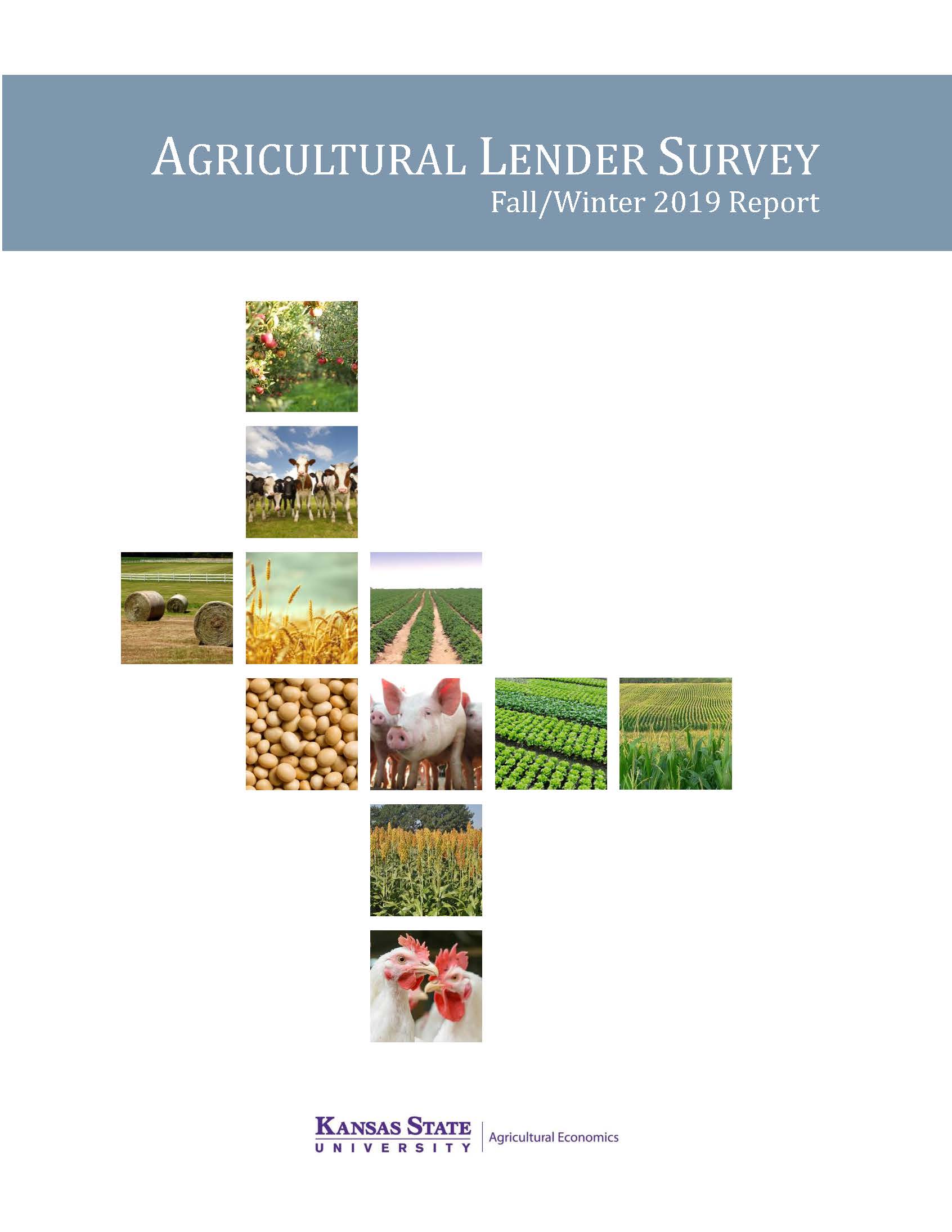
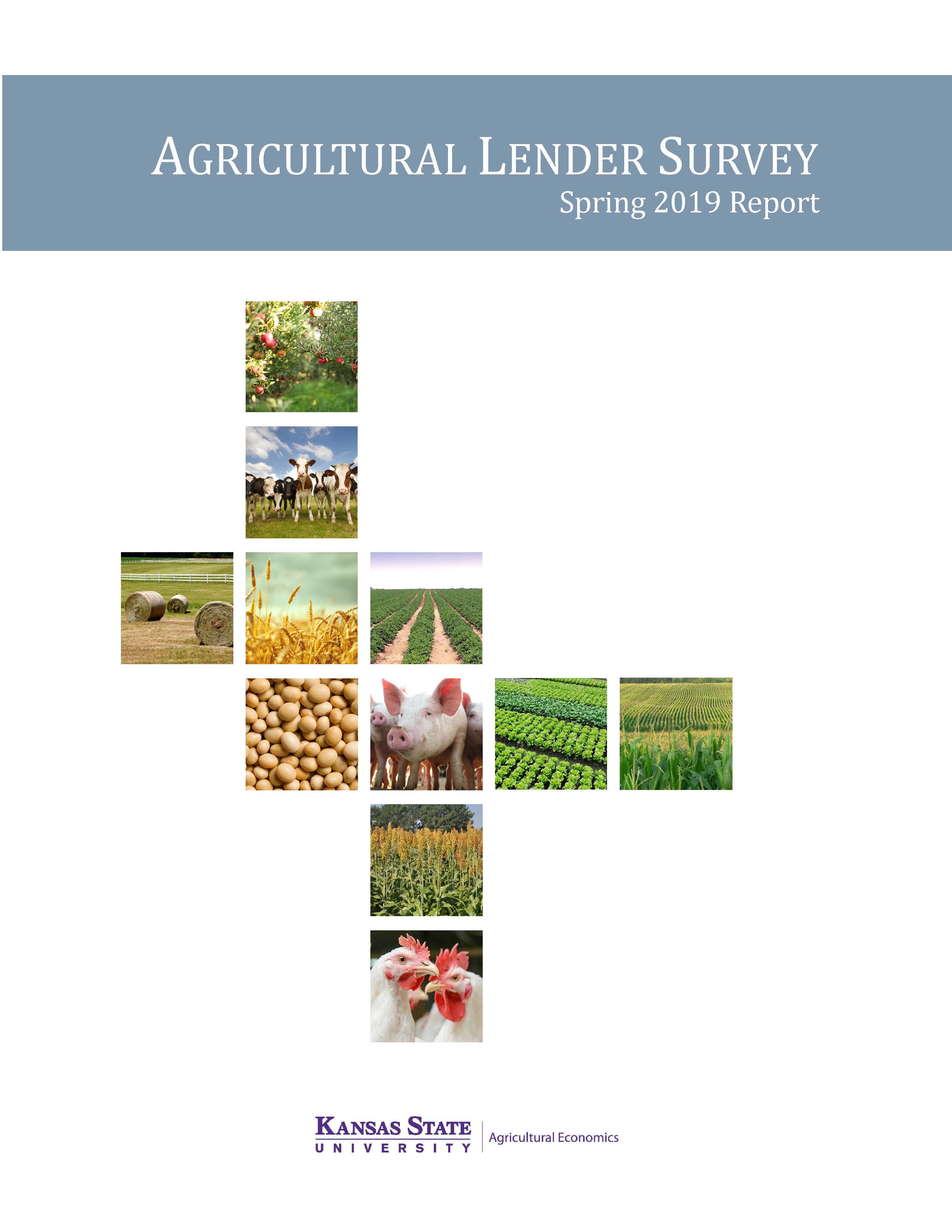
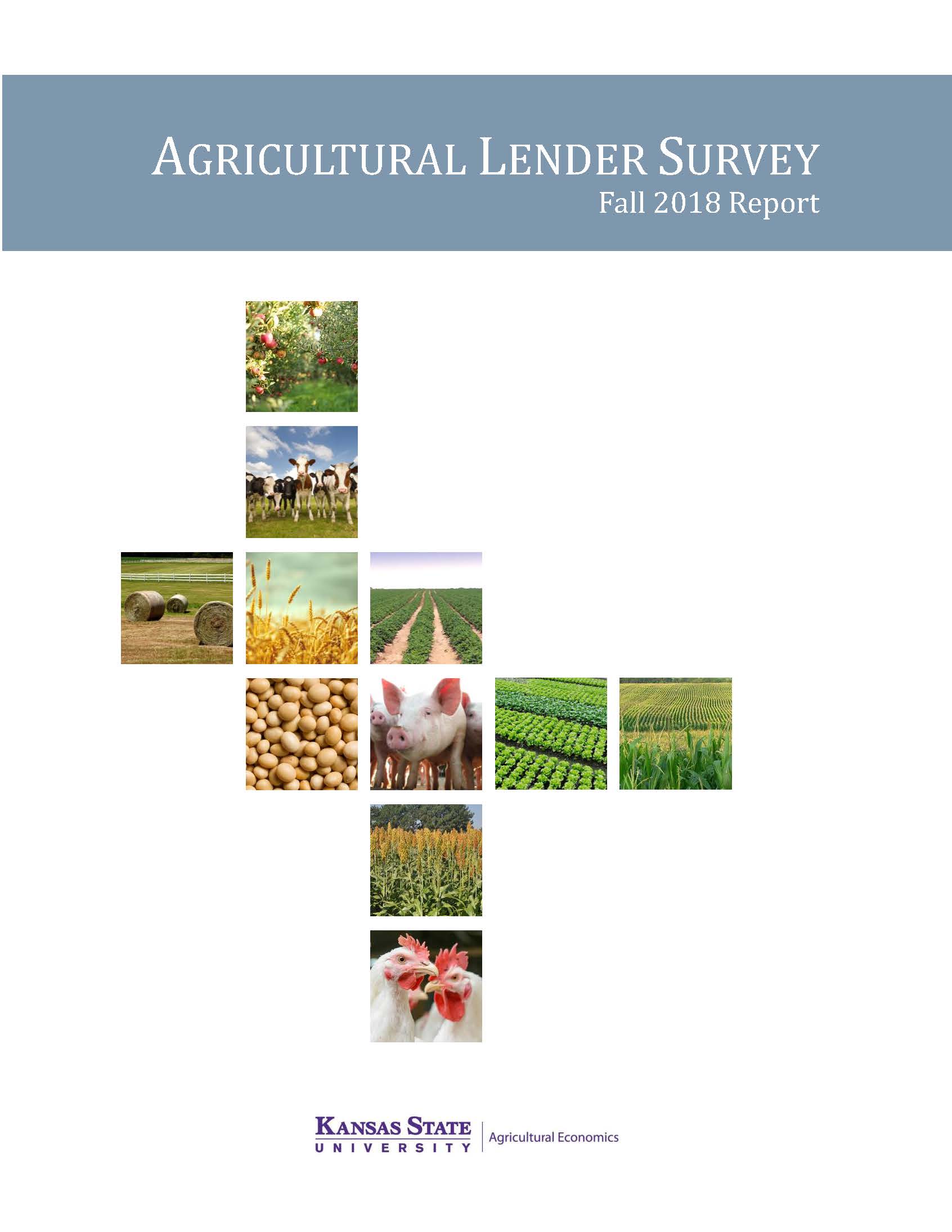 Fall 2018
Fall 2018 Spring 2018
Spring 2018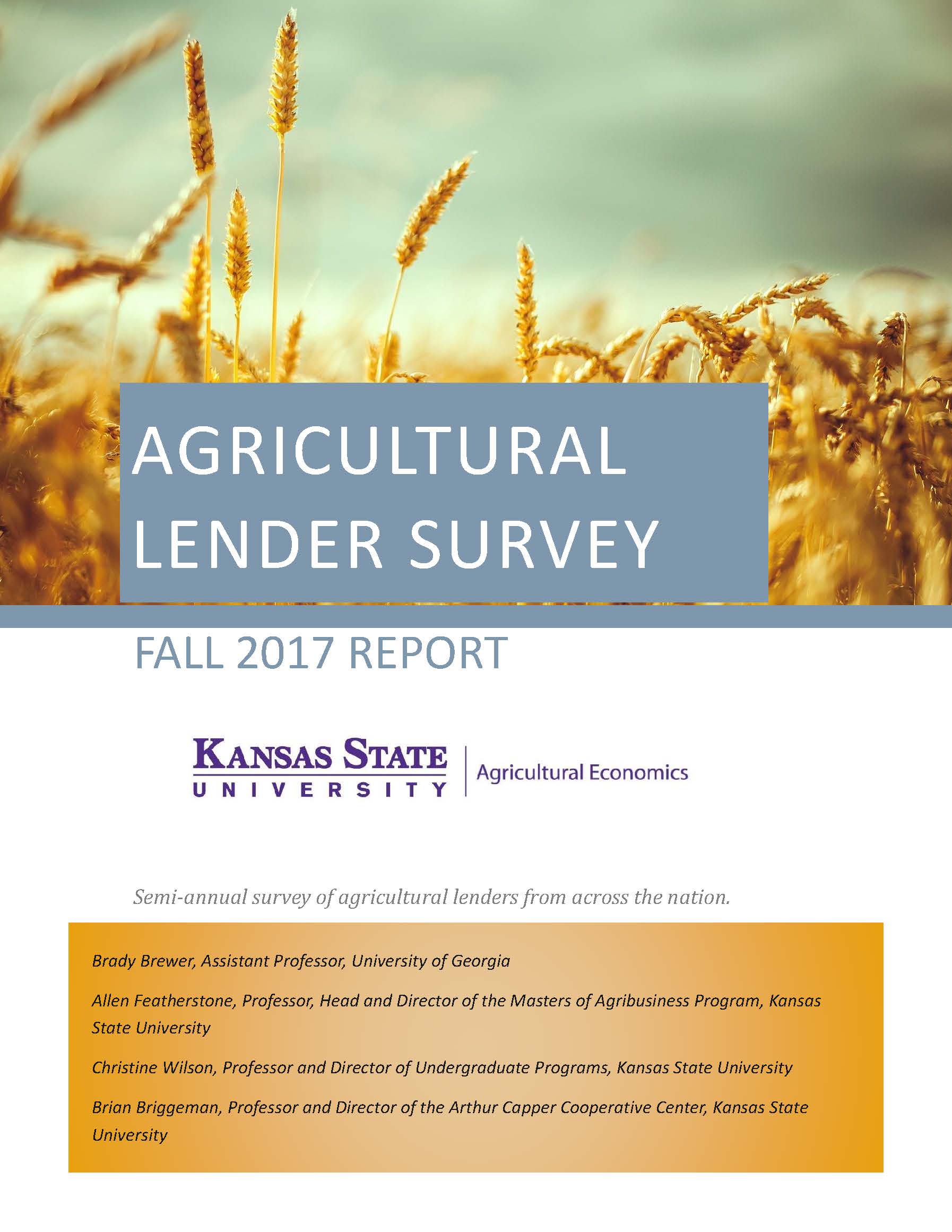 Fall 2017
Fall 2017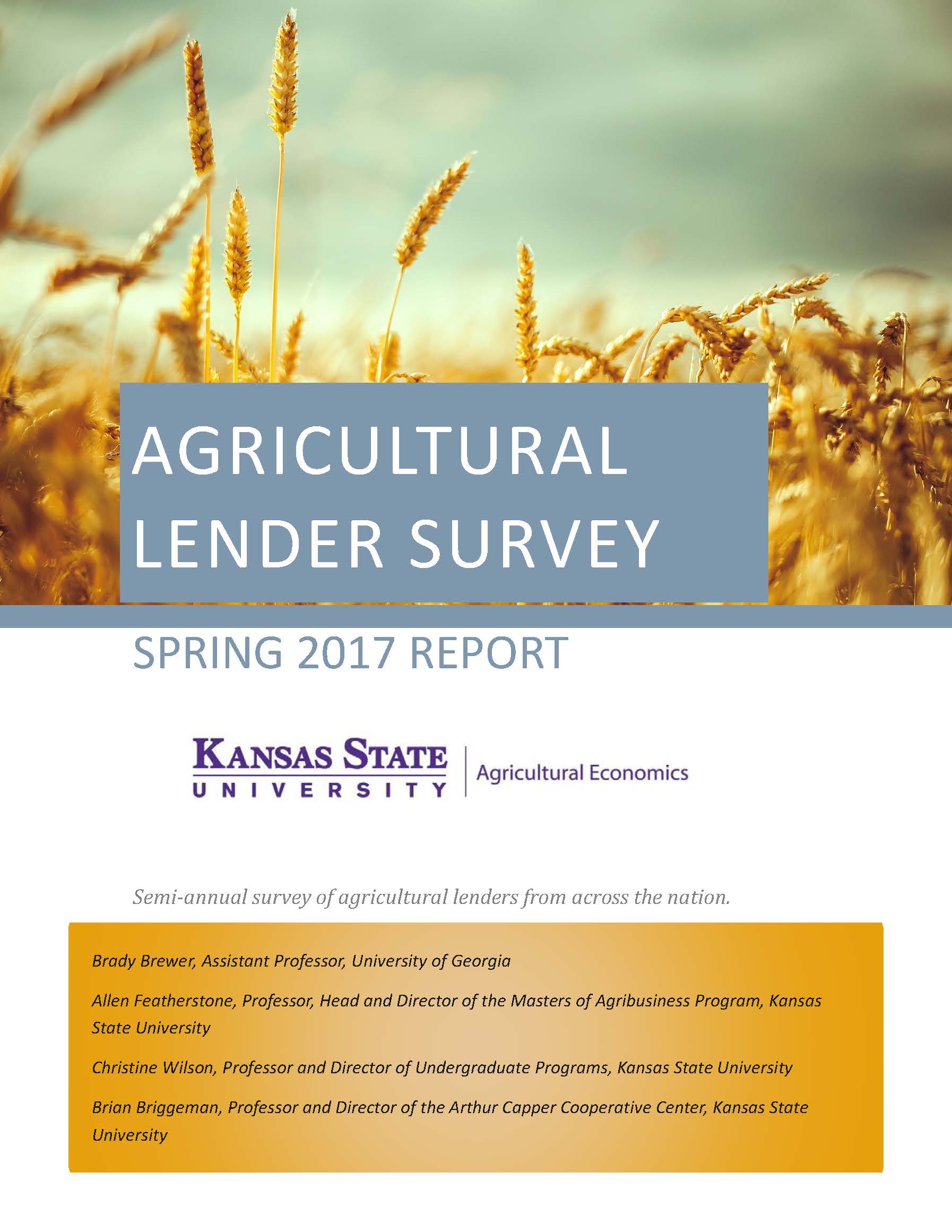 Spring 2017
Spring 2017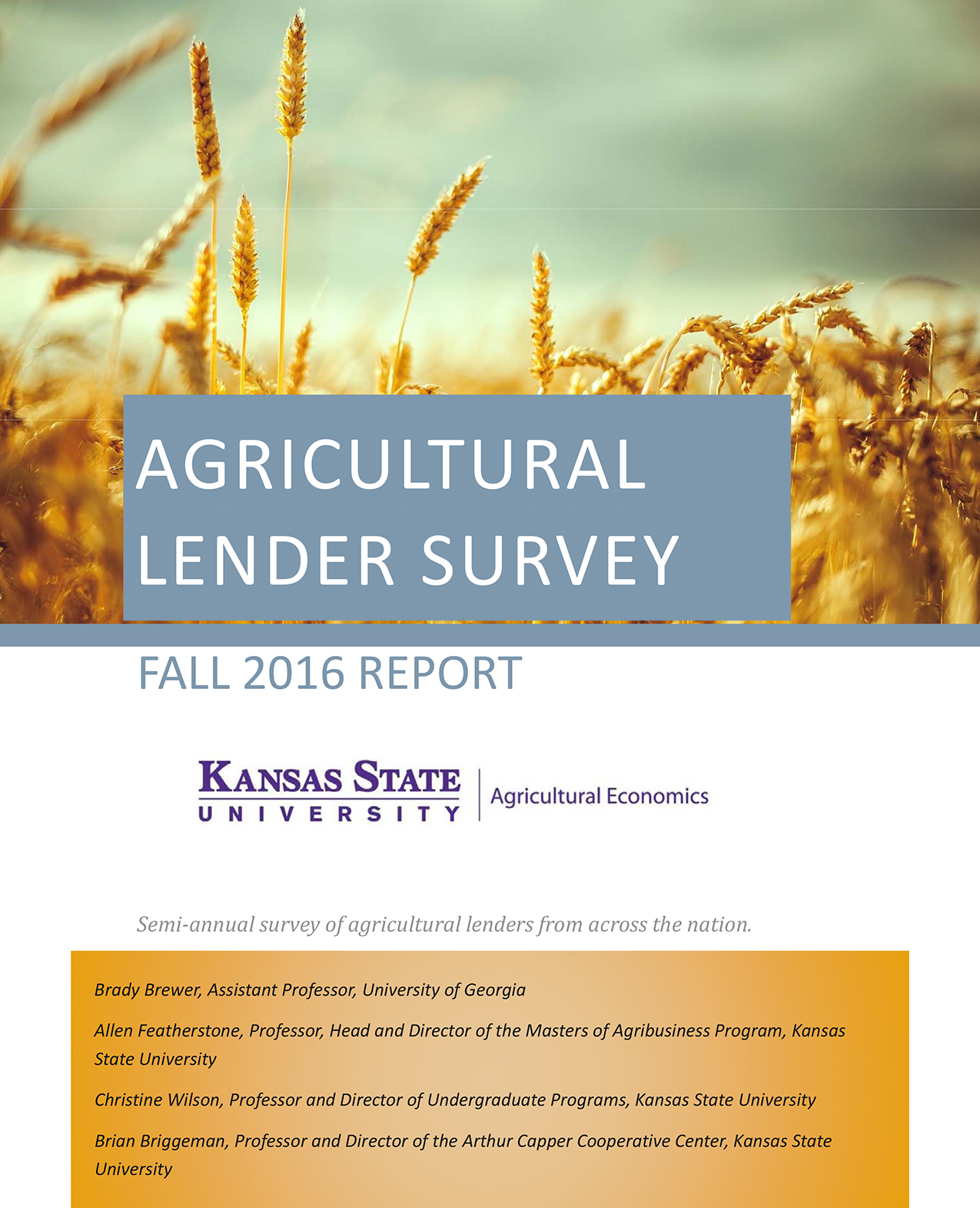 Fall 2016
Fall 2016 Spring 2016
Spring 2016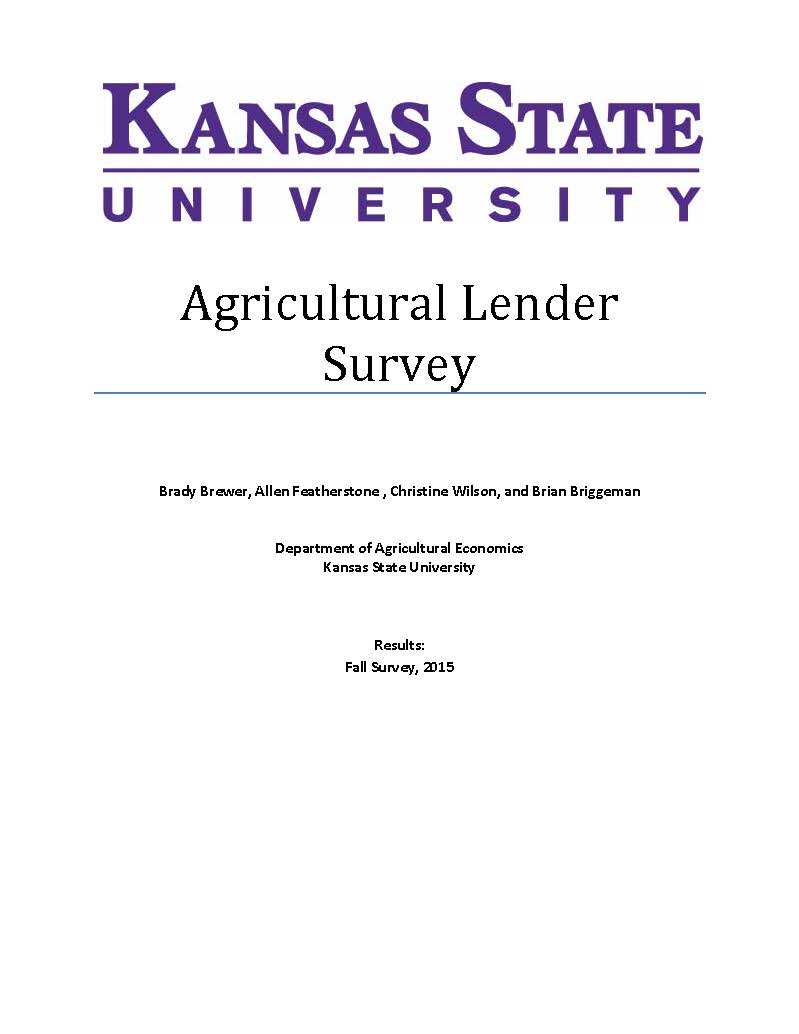 Fall 2015
Fall 2015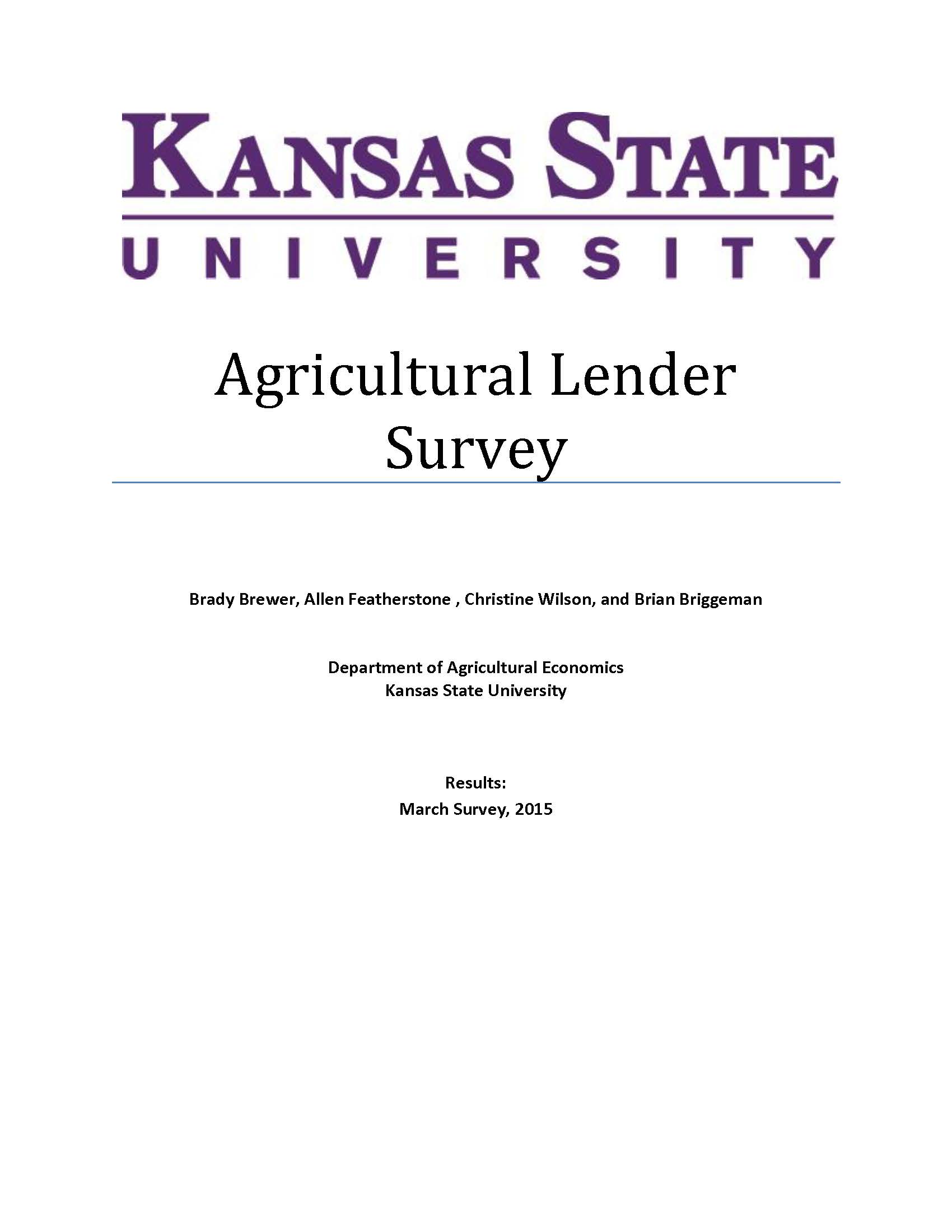 Spring 2015
Spring 2015 Fall 2014
Fall 2014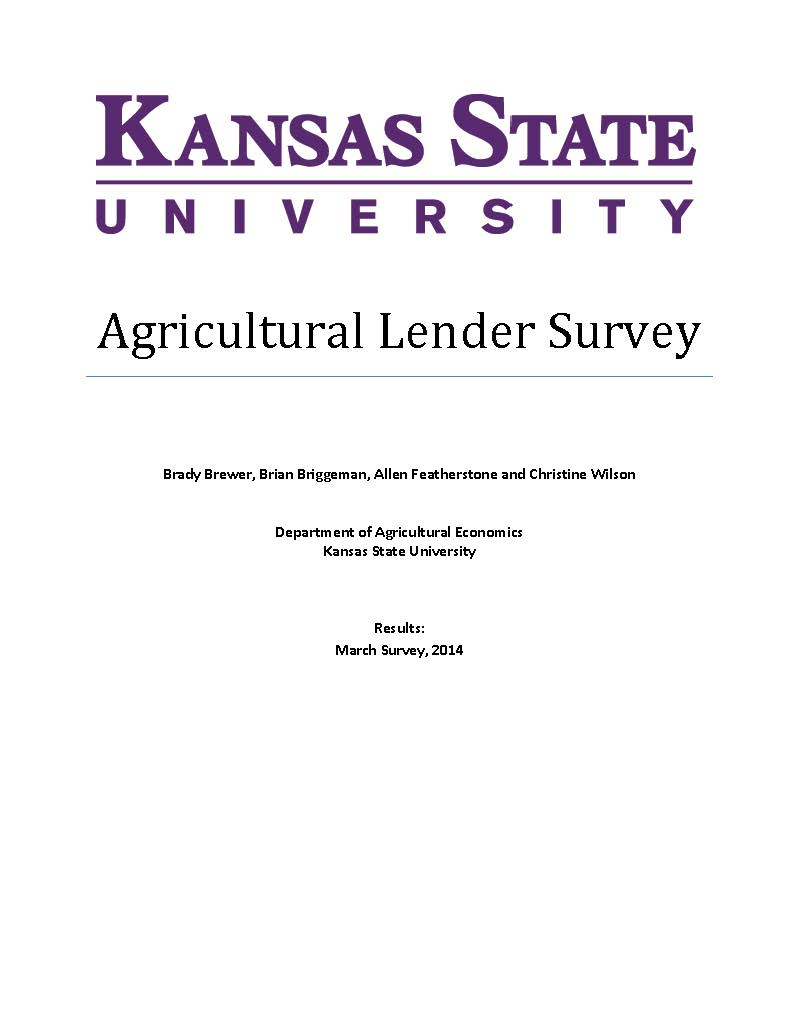 Spring 2014
Spring 2014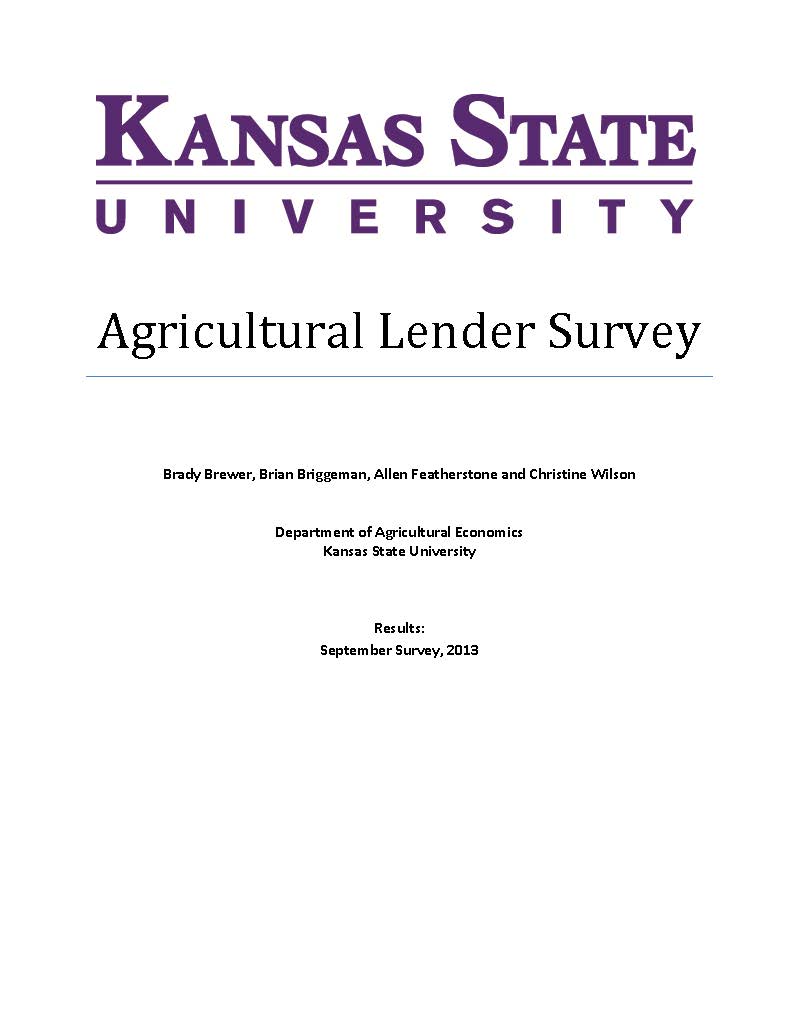 Fall 2013
Fall 2013